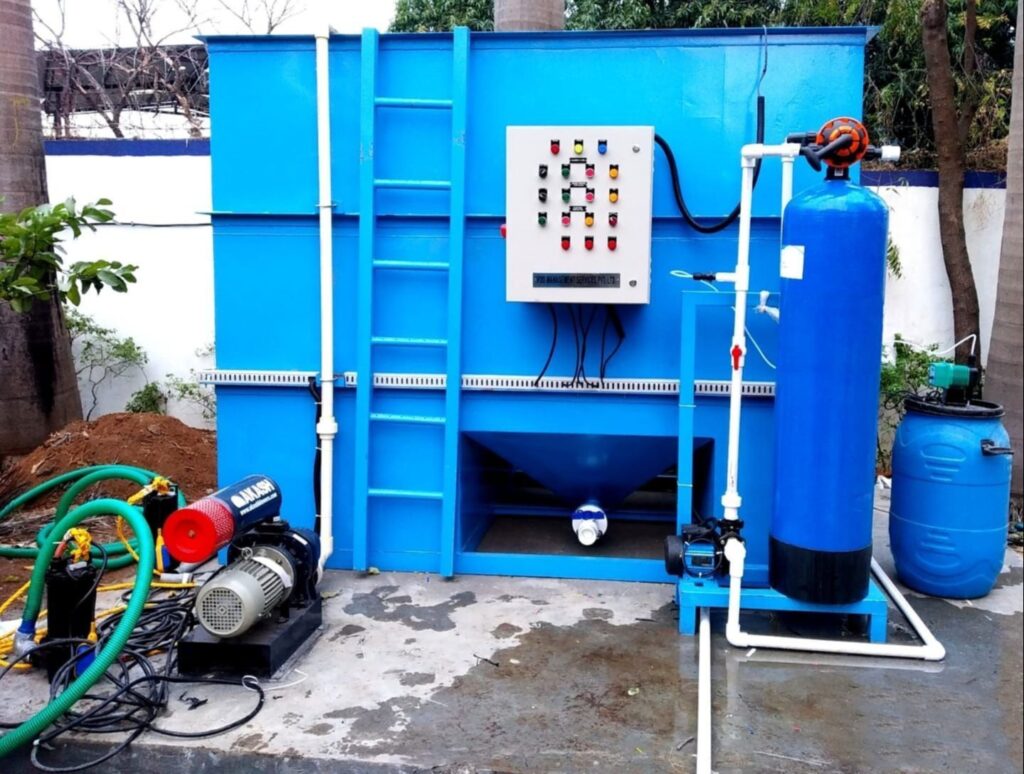What is Package Sewage Treatment Plant? Importance & Types

Package sewage treatment plants are compact, self-contained systems designed to treat wastewater generated from domestic, commercial, and industrial sources. These plants are particularly useful in areas where conventional sewage treatment infrastructure is not feasible due to space constraints, remote locations, or limited budgets. They offer an efficient and cost-effective solution for treating sewage before it discharge back into the environment or reused for various purposes.
The primary function of a package sewage treatment plant is to remove pollutants and impurities from wastewater to make it safe for disposal or reuse. This process involves several stages, each targeting specific contaminants to ensure that the treated water meets regulatory standards and does not harm the environment or public health. Package STPs typically include mechanical, biological, and chemical treatment processes to achieve effective wastewater treatment.
Types of Package Sewage Treatment Plants:
Activated Sludge Process (ASP):
The activated sludge process is one of the most used methods in package sewage treatment plants. It involves the use of microorganisms to break down organic matter in wastewater. In this process, sewage mix with a culture of microorganisms (activated sludge) in an aerated tank. The microorganisms consume organic pollutants as their food source, converting them into harmless byproducts such as carbon dioxide and water. The treated water is then separate from the activated sludge through settling and filtration before being discharge
Extended Aeration System:
Extended aeration systems are another type of package STP that operates on similar principles to the activated sludge process. However, in extended aeration, the contact time between wastewater and microorganisms is prolonged to enhance treatment efficiency. This is achieved by providing a longer aeration period, giving microorganisms more time to metabolize organic compounds effectively. Extended aeration systems are known for their low energy consumption and stable performance, making them suitable for small- to medium-scale.
Sequential Batch Reactor (SBR):
The sequential batch reactor is a versatile and efficient package sewage treatment plant technology that combines multiple treatment stages in a single tank. SBRs operate in batch mode, meaning that wastewater is introducing into the reactor in discrete batches for treatment. The treatment process consists of alternating cycles of aeration, settling, and decanting. During the aerobic phase, microorganisms degrade organic matter, while settling allows for the separation of treated water and sludge. SBRs offer flexibility in operation and can achieve high-quality effluent suitable for reuse in various non-potable applications.
Membrane Bioreactor (MBR):
MBR technology integrates biological treatment with membrane filtration to achieve advanced wastewater purification. In MBR-based package STPs, microorganisms degrade organic pollutants in an aerated tank, like in the activated sludge process. However, instead of conventional settling tanks, MBRs use ultrafiltration or microfiltration membranes to separate treated water from suspended solids and microorganisms. This membrane barrier ensures a high level of effluent quality, making MBRs suitable for applications where stringent water quality standards must be met.
Moving Bed Biofilm Reactor (MBBR):
MBBRs employ attached growth media, such as plastic carriers or biofilm carriers, to support the growth of beneficial microorganisms. These carriers provide a surface area for microbial attachment and biofilm formation, enhancing the biological treatment process. Wastewater passes through the reactor, allowing microorganisms to degrade organic pollutants both in suspended form and on the biofilm surface. MBBR systems are knowing for their compact design, robust performance, and tolerance to fluctuations in hydraulic and organic loads.
Constructed Wetlands:
Constructed wetlands are natural treatment systems that mimic the purification processes occurring in wetland ecosystems. In package sewage treatment plants, constructed wetlands consist of shallow basins filled with aquatic plants, gravel, and soil media. As wastewater flows through the wetland, physical, chemical, and biological processes occur, leading to the removal of contaminants through sedimentation, adsorption, microbial activity, and plant uptake. Constructed wetlands are valued for their sustainability, low energy requirements, and ability to provide habitat and aesthetic benefits.
Electrocoagulation (EC) and Electrochemical Processes:
Electrocoagulation and electrochemical processes are emerging technologies used in package sewage treatment plants to enhance pollutant removal. EC involves the use of electric current to destabilize and aggregate suspended particles, pathogens, and dissolved contaminants in wastewater. This process promotes the coagulation and precipitation of pollutants, facilitating their separation from the water matrix. Electrochemical processes utilize electrodes to induce chemical reactions that lead to the degradation or transformation of pollutants into less harmful forms. These technologies are effective for treating various wastewater streams, including industrial effluents, and challenging contaminants.
Each type of package sewage treatment plant offers unique advantages and is selected based on factors such as wastewater characteristics, treatment requirements, space availability, regulatory compliance, and budget considerations. By employing appropriate technology and best practices, package STPs play a crucial role in safeguarding water resources, protecting public health, and promoting sustainable development.